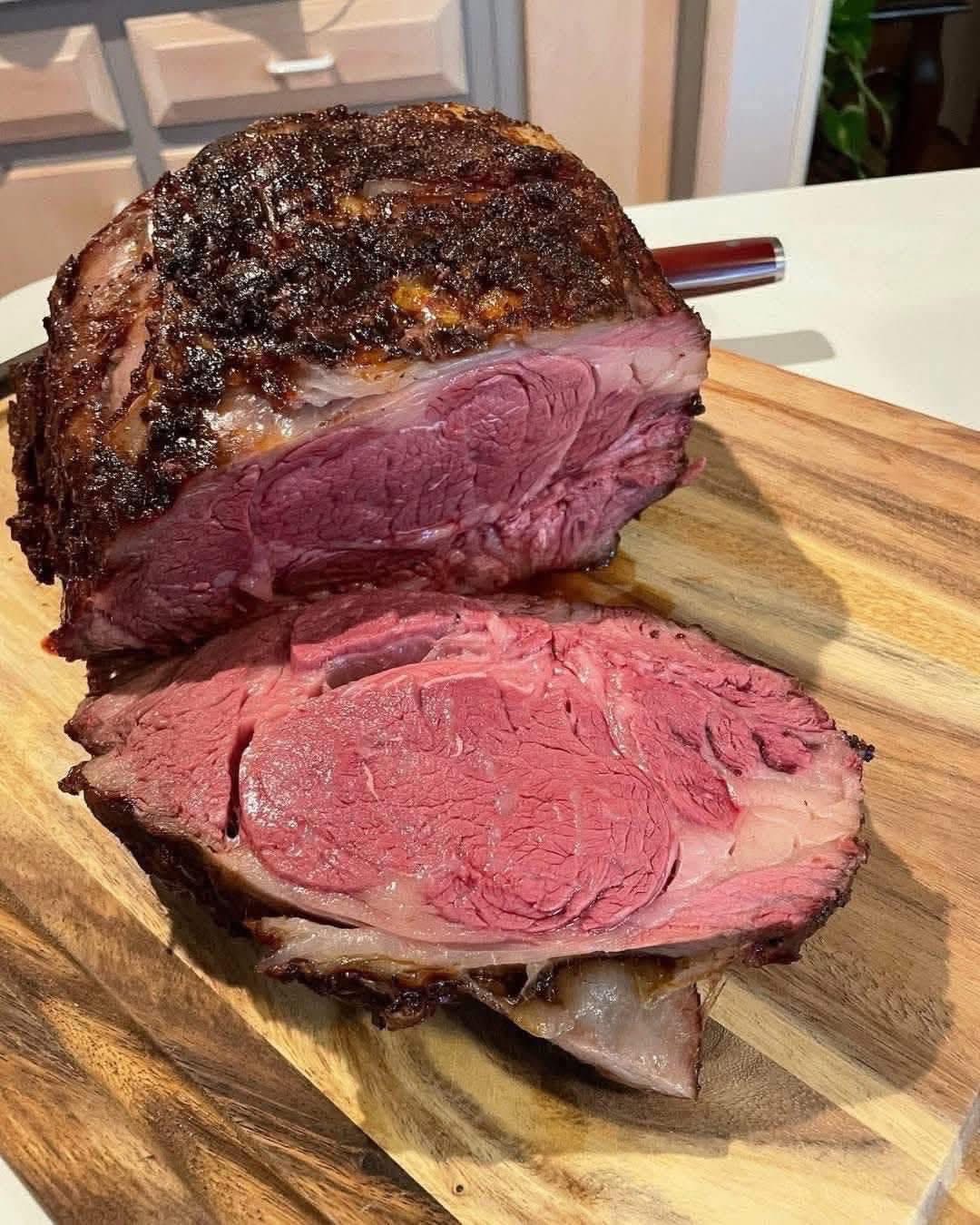Of course! Achieving a perfect prime rib roast is a culinary milestone. It’s simpler than it seems, relying more on good technique than complex steps. The goal: a magnificent, juicy, pink center from edge to edge with a dark, savory, crackling crust.
Here is the definitive guide to cooking a perfect prime rib, covering the most reliable methods and crucial tips.
The Gold Standard: Reverse Sear Method
This is the undisputed champion technique for home cooks. You slowly warm the roast in a low oven first, then blast it with high heat at the end to form the crust. This guarantees:
· Even cooking: No gray “bullseye” of overcooked meat.
· Perfect doneness: Edge-to-edge pink/red.
· Foolproof timing: Less stress, as the low-temp phase is very forgiving.
Step 1: Selecting & Prepping the Roast
· Buying: Plan for one rib bone for every two people. A “three-rib roast” typically serves 5-6. Ask your butcher for a “standing rib roast.”
· Grade: Prime grade has the most marbling and is ideal. Choice grade is excellent and more common.
· Prep (The Day Before): This is a CRITICAL step for a great crust.
- Unwrap the roast and pat it very dry with paper towels.
- Place it on a wire rack set over a baking sheet, uncovered, in the refrigerator for at least 24 hours, or up to 48 hours. This dries the surface, which is the secret to a brown, crispy crust.
Step 2: Bringing to Temperature & Seasoning
- Remove from Fridge: Take the roast out of the refrigerator 3-4 hours before cooking. A cold roast will not cook evenly.
- Season Generously: Rub the entire roast with a high-heat oil (avocado, canola, or light olive oil). Season extremely generously on all sides with coarse kosher salt and freshly cracked black pepper. The surface should look coated. For extra flavor, add minced garlic and fresh rosemary or thyme.
Step 3: The Reverse Sear Process
Prep Time: 15 minutes
Cook Time: Varies by size (see chart below)
Rest Time: 30+ minutes
Servings: 1 rib for every 2 people
What You Need:
· Prime Rib Roast
· Wire rack and rimmed baking sheet (or roasting pan)
· Meat thermometer (a digital probe thermometer is best)
Instructions:
- Preheat Oven: Preheat your oven to a low 225°F (107°C).
- Slow Roast to Temperature: Place the roast bone-side down (the bones act as a natural rack) on a wire rack in a roasting pan. Insert a probe thermometer into the center of the roast, avoiding fat or bone.
· Roast until the internal temperature is 10-15°F (5-8°C) LOWER than your desired final temperature.
· This is the most important part. Use this chart:
Desired Doneness Final Temp (after rest) Remove from Oven at
Rare 120-125°F (49-52°C) 105-110°F (41-43°C)
Medium Rare 130-135°F (54-57°C) 115-120°F (46-49°C)
Medium 140-145°F (60-63°C) 125-130°F (52-54°C)
- The High-Heat Blast: Once the roast hits your target “remove” temperature, take it out of the oven. Tent it loosely with foil.
· Increase your oven temperature to 500°F (260°C). Let it get fully hot.
· Once hot, remove the foil and return the roast to the blistering oven for 8-12 minutes, just until the crust is browned and crispy. Watch it closely to avoid burning.
Step 4: The Crucial Rest
- Rest: Remove the roast from the oven, transfer it to a cutting board, and tent it with foil. Let it rest for at least 30 minutes, and up to 45 minutes for a large roast.
· Why? The juices redistribute throughout the meat. If you cut it immediately, the juices will run out onto the cutting board.
· Don’t worry, it will stay hot. The internal temperature will continue to rise by 5-10°F (the “carryover cooking”) to reach your final desired doneness.
Step 5: Carving and Serving
- Carve: Use a long, sharp carving knife. Slice along the bone to separate it from the meat first. Then, turn the roast on its flat side and slice into desired thickness.
- Serve: Serve with au jus (the natural juices from the pan), creamy horseradish sauce, and Yorkshire puddings.
Classic High-Heat Method
For those who prefer a more traditional approach.
· Preheat oven to 450°F (230°C).
· Cook the seasoned roast for 15 minutes.
· Reduce the oven temperature to 325°F (163°C) and continue roasting until the internal temperature reaches your desired doneness (use the “Final Temp” from the chart above).
· Rest for 30 minutes before carving.
Essential Tips for Perfection
· The Thermometer is Non-Negotiable: Cooking by time (minutes per pound) is a guess. A good probe thermometer is your best insurance policy.
· Salt Early: Salting 24-48 hours in advance (during the dry-brine stage) allows the salt to penetrate deeply, seasoning the meat from within.
· Don’t Fear the Rest: The long rest is what makes the roast juicy and easy to carve. It is not optional.
· Save the Juices: After resting, you will have incredible juices on the cutting board. Pour them back into the roasting pan to make your au jus or gravy.
Enjoy your masterpiece! A perfectly cooked prime rib is a show-stopping centerpiece for any special occasion.

